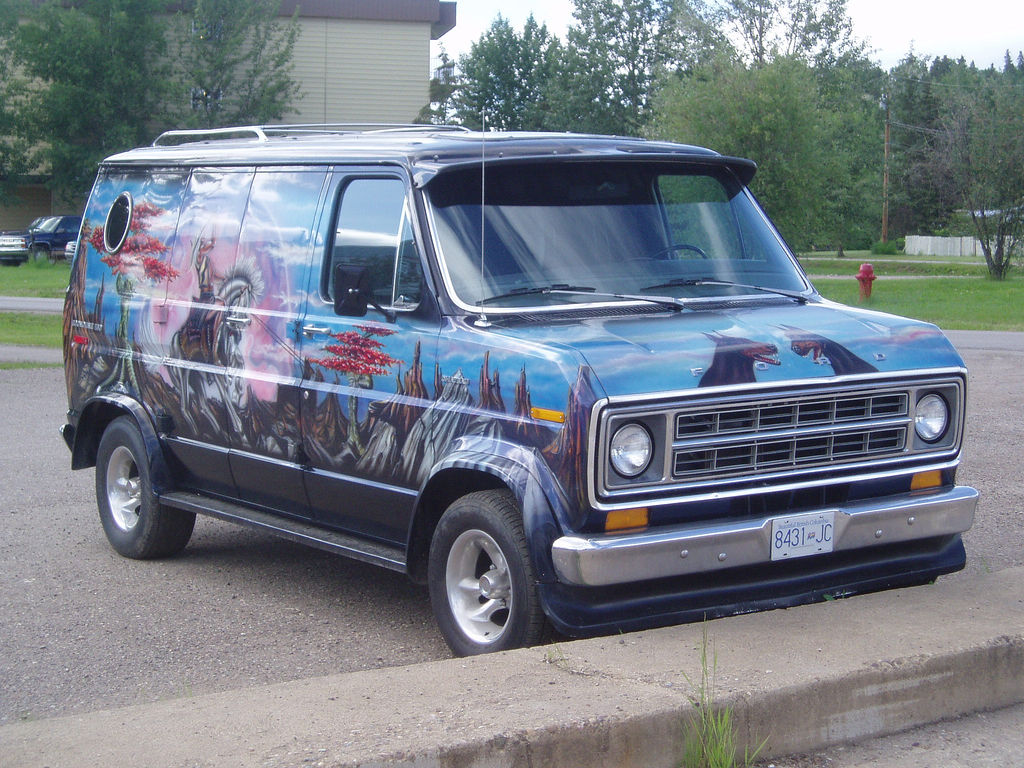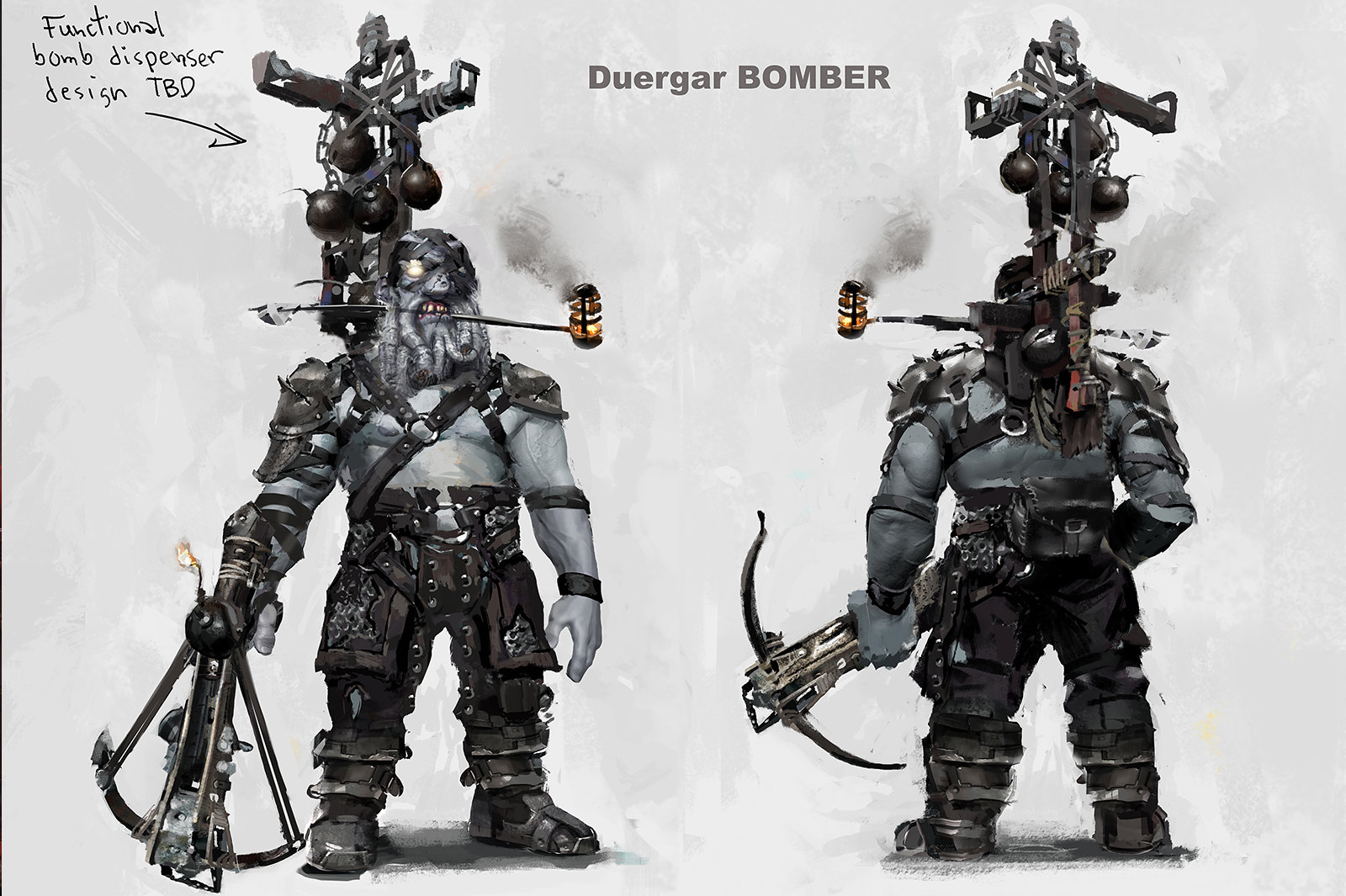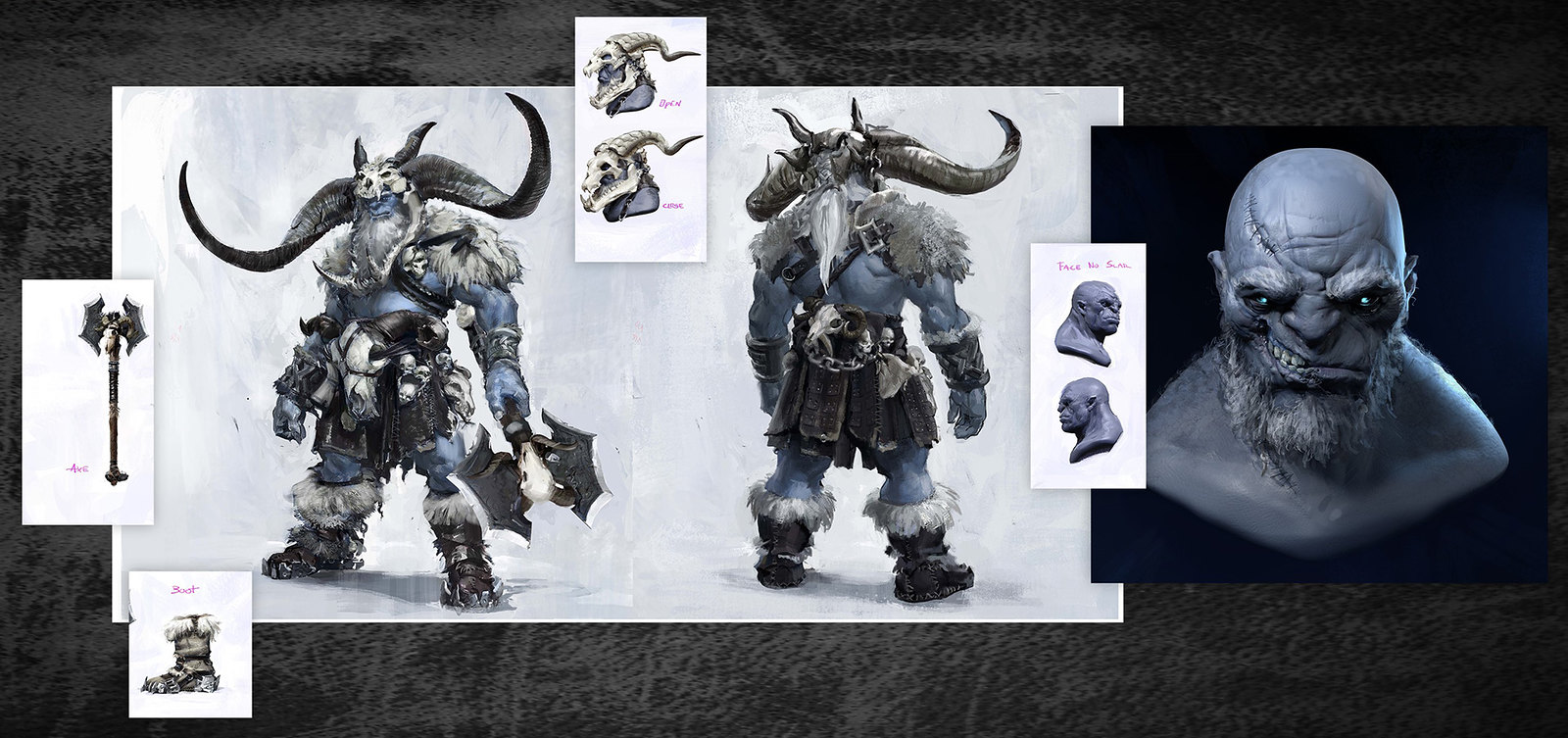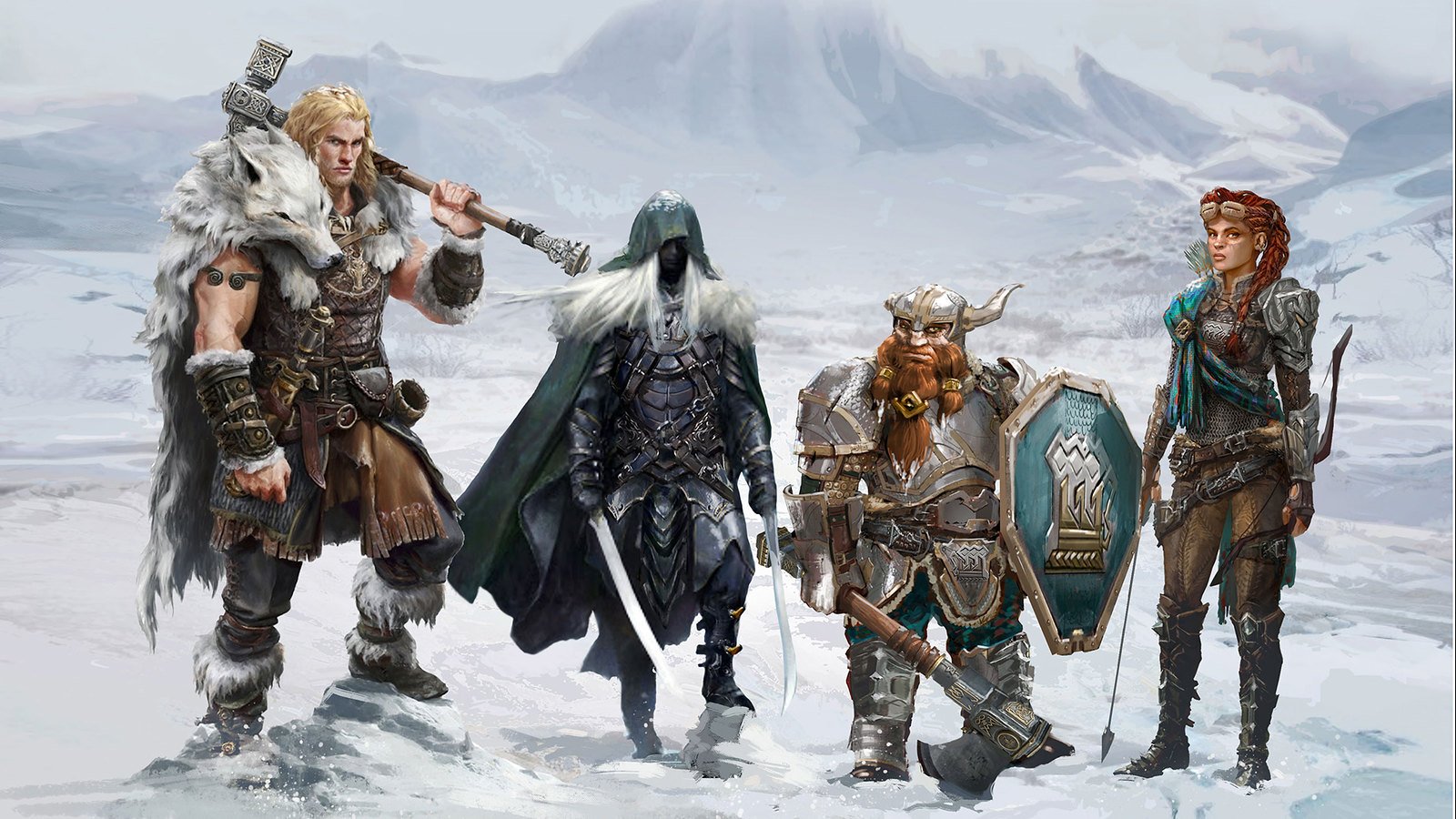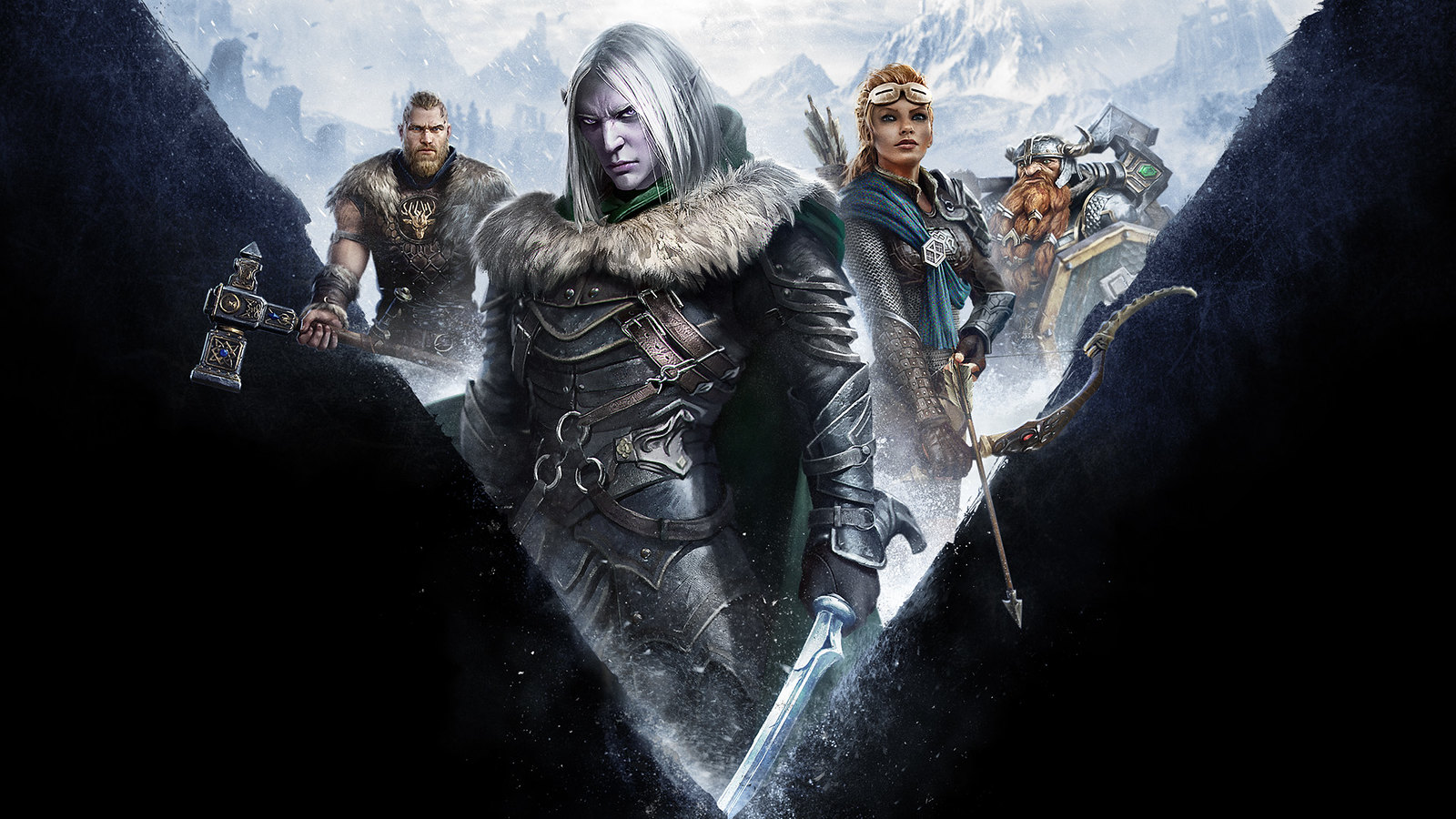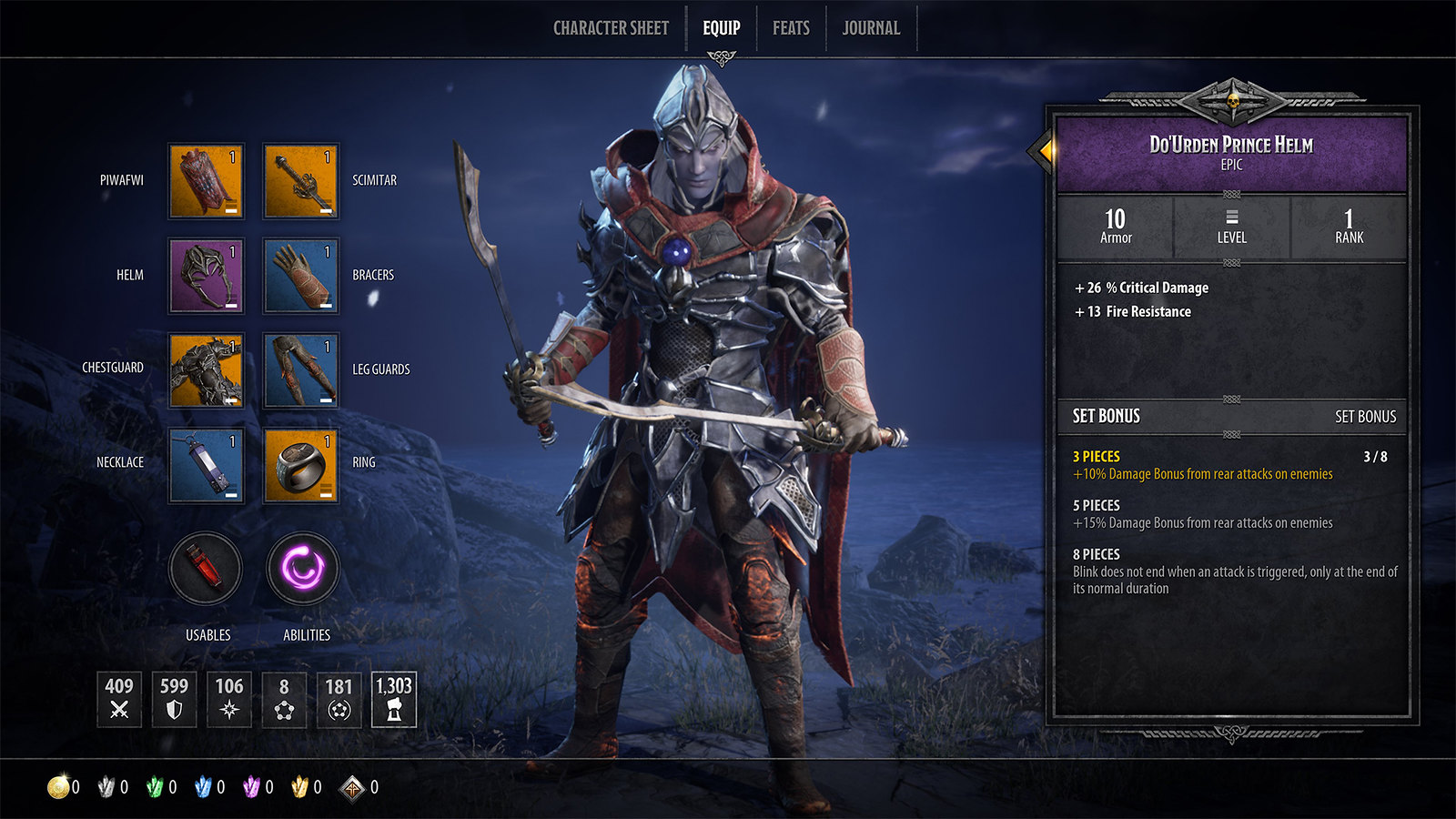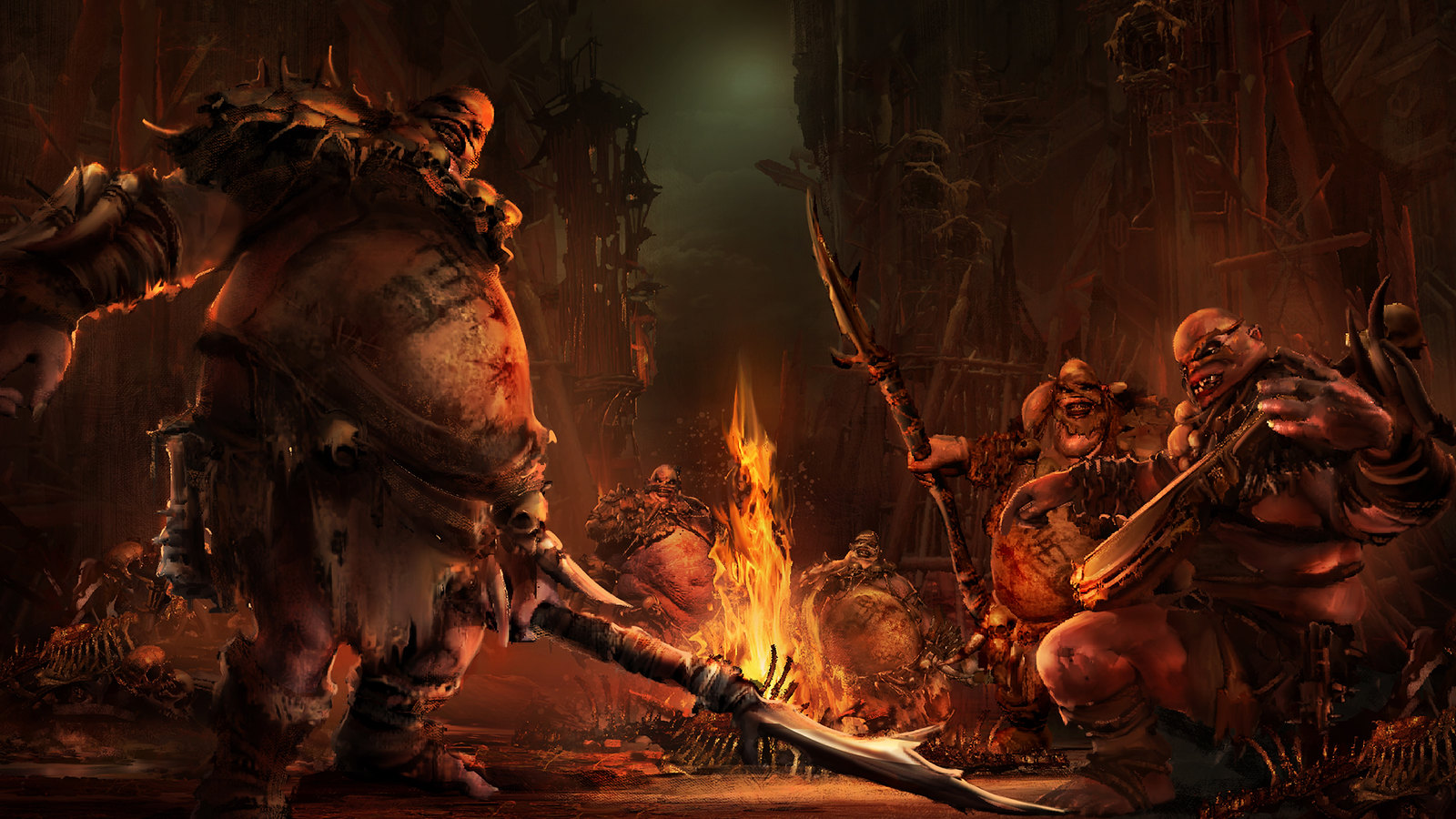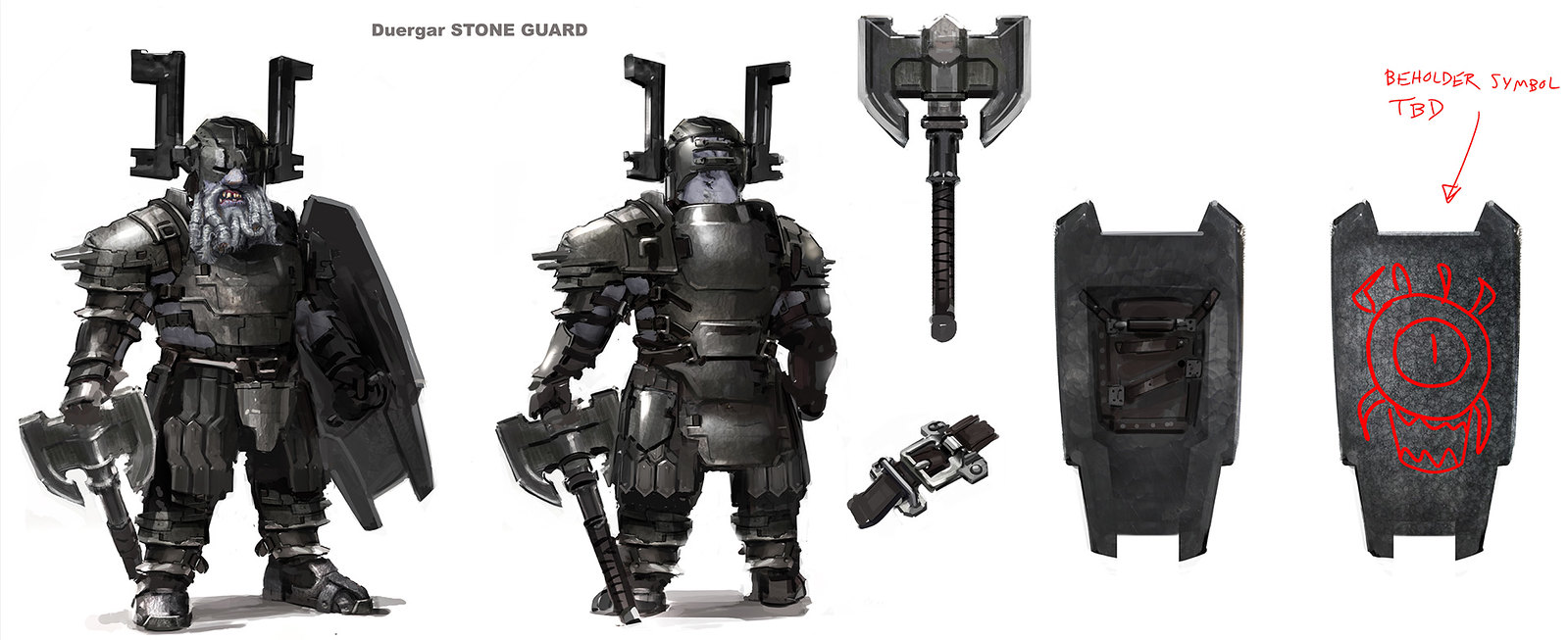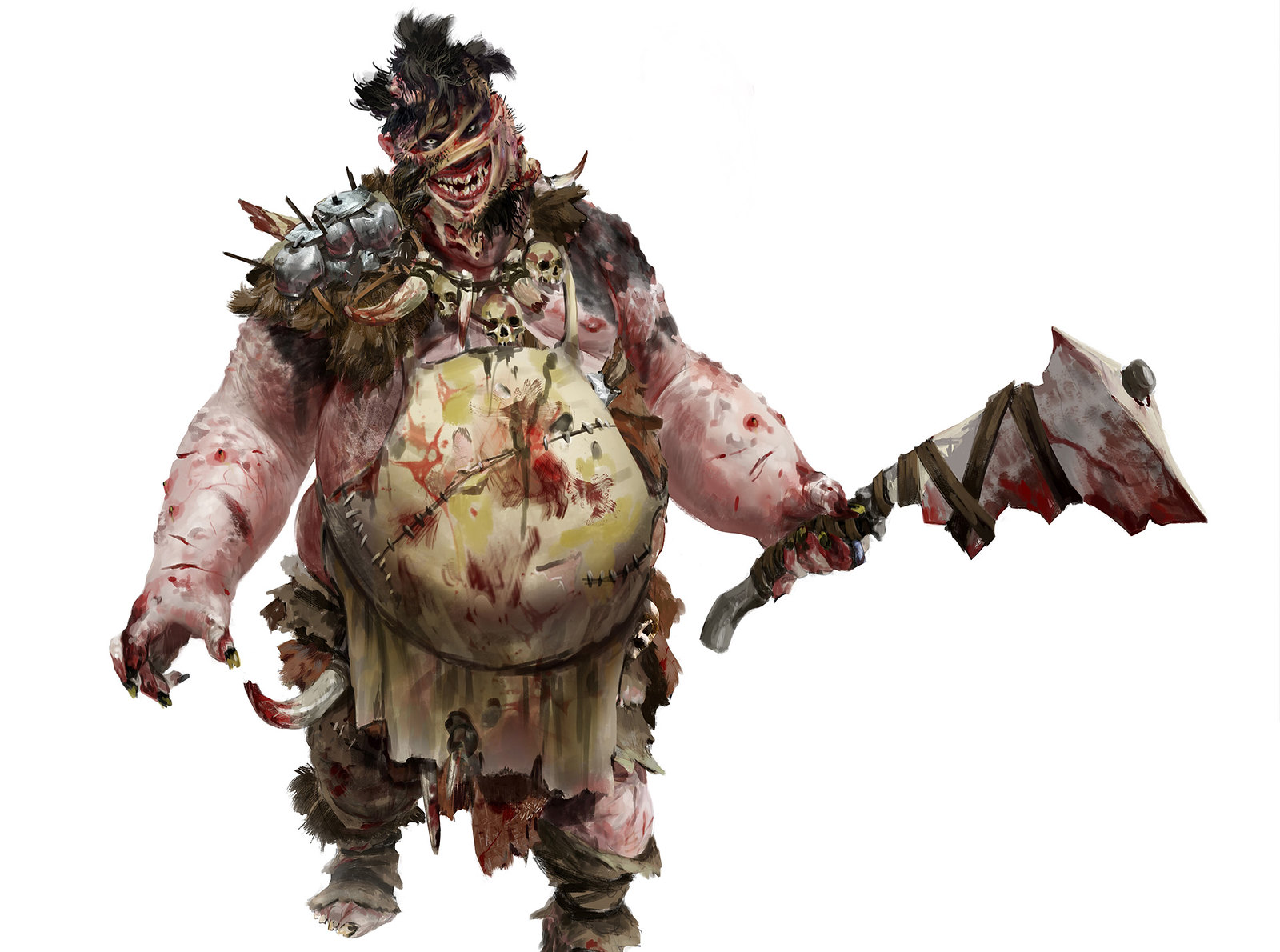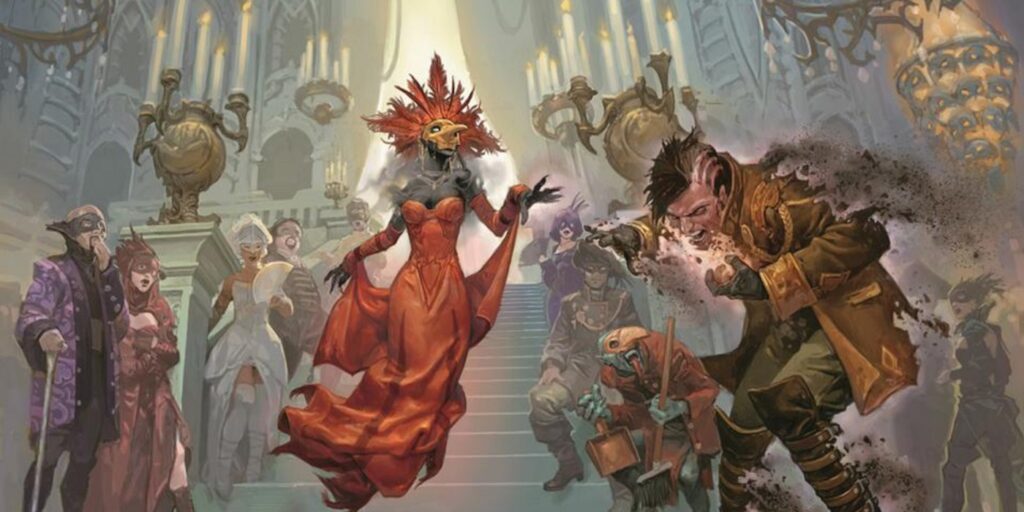D&D: Dark Alliance Is Making Dungeons & Dragons More Metal
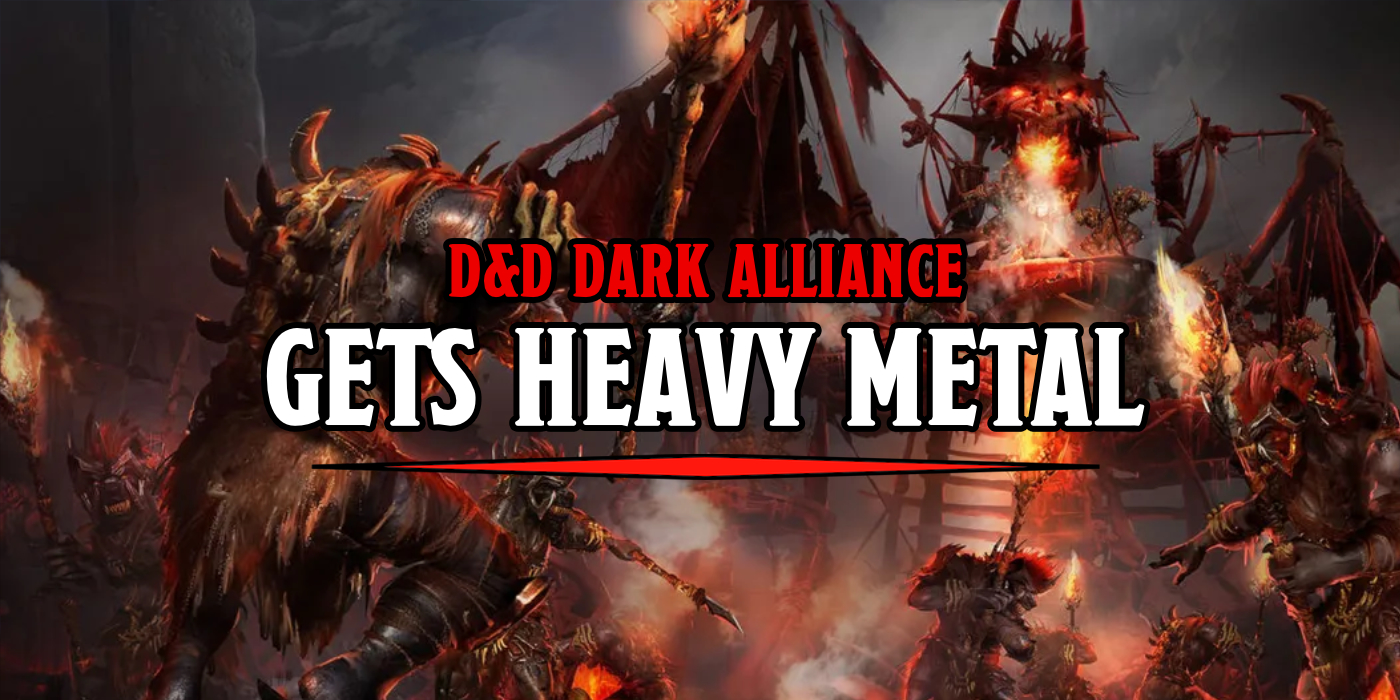
One of the biggest inspirations for Dark Alliance is the driving aesthetic behind the frosty reaches of Icewind Dale: heavy metal music.
Heavy metal and fantasy go together like Christopher Lee and, uh, heavy metal. Or like dragons and airbrushes go with the side of that sweet van you’ve been rebuilding all summer.
This is a flavor explosion that has been tested time and again, is what we’re saying. So it’s little wonder that the creative art director of Tuque Games, Stefan Leblanc would turn to this particularly awesome pantry to find the secret ingredient that makes Dark Alliance look and feel like the action-soaked brawler it promises to be. It also sort of explains that first trailer where someone taped a GoPro to one of Drizzt’s scimitars too.
Leblanc spoke about the driving aesthetic behind Dark Alliance on the PlayStation Blog, showcasing not only a bunch of new artwork but also the method behind the metal.
The concept of Dark Alliance is simple. It’s you and your friends versus this alliance between legions of monsters. The monsters really started to take on a life of their own as we developed the game. In a way, they’re the stars of the show. They’re what you are going to remember when you talk about Dark Alliance with your friends.
I was interested in exploring the various cultures of these monsters. To me, the best way to showcase a culture is through its music and dance.
This is what drove the game’s style, music, and tone. But it also needs to feel fresh in the high fantasy genre. So, one day I was asked to sum up the game’s art style in two words.
We’re heavy metal.
Advertisement
Uh, yeah I’ll say. Now of course, Leblanc is talking about the game’s art style–the music is that same sweeping orchestral fantasy pastiche we’re all used to, with stirring strings signifying the sort of journey into a liminal world where magic is real, and drums and deep brass sounding whenever demons or other evil creatures are near.
But what drew LeBlanc to heavy metal in particular for the world was the larger-than-life music, which could also capture the epic nature of the adventure at hand. A challenge that the team faced in bringing iconic characters like Drizzt, Bruenor, Catti-brie, and Wulfgar to life.
It’s quite the journey from concept art (above) to final version (below).
Most notably, Drizzt is that light lavender, a far cry from the black skin he’s described with in numerable books–but that seems to be the direction that WotC is taking with the character these days. Catti-brie and Bruenor look mostly the same, and poor Wulfgar got hit by a biker movie circa 2011.
But where the team really started “having fun” is with the various gear they created for each of the different characters:
And, like any good D&D creator, in exploring the monsters, which get a lot of development in the game:
here are more than 30 different enemy types in Dark Alliance. Each main faction of monsters gets its own mission structure that explores their architecture, culture, and even a bit of their daily practices. By centering each three-act mission around a faction, it helps us build a cohesive visual design that brings our world to life and makes our enemies more memorable.
Leblanc shows off two of the monster designs, the Duergar, sort of psychic evil deep dwarves (who may possibly aligned with Hagedorn, the Beholder boss of Dark Alliance).
And the Verbeeg, whom 5E players might be less familiar with, but they’re somewhere between ogres and giants, but imagine if they were more wickedly cunning.
What do they like to do? Trust me, you’d rather not know, but you’ll find out for yourself come June 22nd.
Happy Adventuring!

